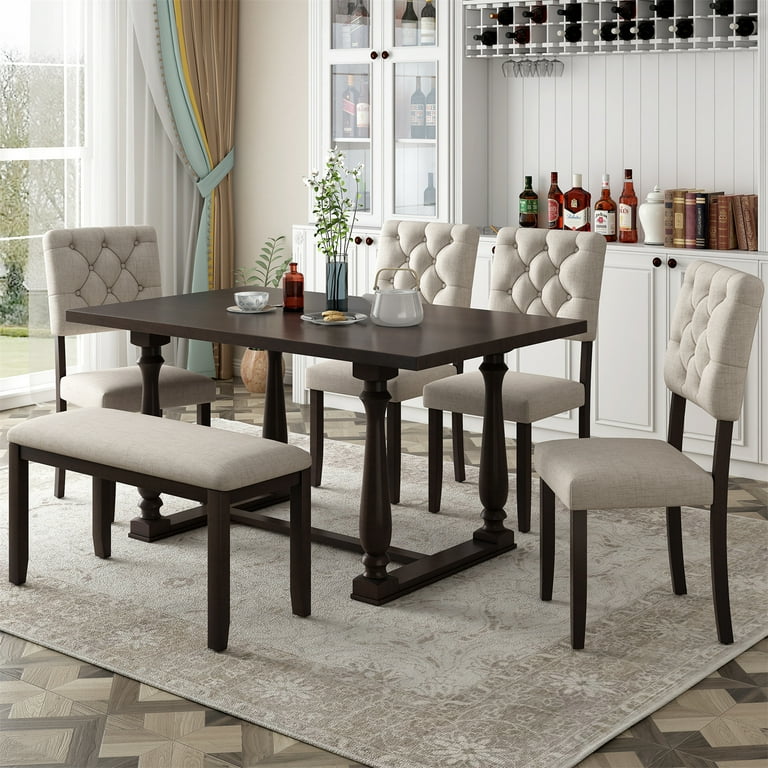Find the Ideal Dining Room Table Legs for Any Interior Design Style
Find the Ideal Dining Room Table Legs for Any Interior Design Style
Blog Article
Expert Tips for Putting Up Dining Space Table Legs for Optimum Security
When it comes to installing eating area table legs, achieving maximum security is paramount for both capability and aesthetics. What certain techniques can enhance security also further?
Select the Right Legs
When selecting the suitable legs for your dining-room table, it is important to take into consideration both capability and appearances. The legs you pick will considerably influence the overall layout and stability of the table. First, review the table's intended usage; if you anticipate constant celebrations, sturdier legs, such as those made from solid wood or steel, may be preferable, as they offer enhanced toughness and assistance.
Standard dining tables typically range from 28 to 30 inches in height, so guarantee the legs align with this requirement for convenience. Tapered legs can include a modern touch, while transformed legs could communicate a more traditional aesthetic.

Select Appropriate Equipment
How can the right hardware improve the security and longevity of your dining-room table? The option of appropriate equipment is essential to guaranteeing that the legs of your table are firmly attached and able to stand up to routine usage. High-grade screws, screws, and braces supply the essential toughness to sustain the weight of the table, in addition to any kind of additional loads placed upon it throughout dishes or gatherings.
When choosing screws, go with those made from long lasting products such as stainless steel or brass, which stand up to corrosion and maintain stability in time. The length of the screws is similarly vital; they ought to pass through deeply into the table's structure without jeopardizing honesty. For bolted connections, consider utilizing lock washers to avoid loosening due to vibration or movement.
Additionally, using corner brackets can add extra support, particularly for bigger tables or those with much heavier tops. These brackets disperse weight uniformly and assist maintain the table's form. Making certain that the equipment you choose is appropriate for the details products of your table will certainly better enhance its total stability and longevity, permitting you to appreciate your eating experience for many years to come.
Ensure Correct Positioning
Appropriate alignment of eating room table legs is vital for both aesthetic allure and practical stability. Misaligned legs can cause an unequal tabletop, which might not just be visually unappealing yet likewise compromise the table's use. To attain ideal placement, begin by measuring the distance from the table's edges to the leg attachment factors. This makes certain that each leg is located equidistant from the sides, producing a well balanced look.
Use a degree during installment to verify that each leg is vertical to the tabletop. This action is essential, as also small discrepancies can escalate right into substantial stability problems with time. It is recommended to note the preferred leg settings on the bottom of the table with a pencil or concealing tape before protecting them. This technique offers as a visual overview, enabling adjustments as needed.
Moreover, ascertain the alignment after the initial screws are tightened, as adjustments may be needed prior to completely protecting the hardware. By prioritizing appropriate placement, you not just boost the table's overall design but also guarantee that it continues to be practical and stable for many years to find.

Take Into Consideration Weight Circulation
After ensuring correct alignment of the eating space table legs, it is necessary to consider weight distribution to boost stability and capability. dining room table go to this website legs. Appropriate weight distribution is essential in stopping tottering and ensuring that the table can support its intended tons without risk of tipping or collapsing
When placing the legs, ensure they are put at equivalent distances from the center of the table to equally distribute the weight throughout the framework. Think about the weight of the table top and any type of items that will often rest on it, such as tabletop devices or decorative items. Tables with heavier surface areas ought to preferably have legs positioned closer to the corners, as this takes full advantage of the base of support and lessens the risk of instability.
Furthermore, if the table is intended for usage in a high-traffic location, consider making use of heavier products for the legs or adding supporting components, such as cross-bracing or a reduced shelf - dining room table legs. These changes can help preserve balance and prevent changing during use. Eventually, a well-considered weight circulation approach will significantly enhance the table's general performance, ensuring it stays a attractive and practical focal point for your dining space
Test Stability Prior To Use
Evaluating the security of the eating area table prior to usage is an essential step that should not his response be overlooked. If the table reveals instability, identify the legs or joints that may require adjustment.
Following, inspect that all bolts and screws are tightened up properly. Loose links can bring about instability and possible damages with time. If needed, utilize timber adhesive on joints to enhance stability, guaranteeing to allow appropriate drying out time.

Conclusion
In verdict, the installation of dining area table legs needs mindful consideration of products, equipment, weight, and alignment circulation to accomplish maximum stability. By picking sturdy legs and premium fasteners, making sure precise alignment, and distributing weight evenly, the architectural honesty of the table can be substantially boosted. Conducting a stability examination before routine usage even more makes sure that the table will certainly hold up against day-to-day stress, thereby supplying a trustworthy and safe eating experience.
When it comes to mounting dining area table legs, accomplishing maximum security is vital for both functionality and looks. The legs you select will considerably impact the general style and security of the table (dining room table legs). Conventional eating tables usually vary from 28 to 30 inches in elevation, so ensure the legs line up with this requirement for additional reading convenience.Correct placement of eating room table legs is important for both visual charm and practical security.In conclusion, the installment of dining room table legs requires careful factor to consider of products, positioning, weight, and hardware circulation to accomplish optimum stability
Report this page